 W
WJS Amagiri (DD-154) is an Asagiri-class destroyer of the Japan Maritime Self-Defense Force. Amagiri is currently in active service, homeported in Maizuru, Kyoto, Japan.
 W
WJS Amakusa is a Hiuchi-class Auxiliary Multi-purpose Support (AMS) ship of the Japan Maritime Self-Defense Force (JMSDF).
 W
WThe Asashio-class submarine is a submarine class of Japanese Maritime Self-Defense Force. This class is the successor of Ōshio.
 W
WJS Ashigara (DDG-178) is an Atago class guided missile destroyer in the Japan Maritime Self-Defense Force (JMSDF). Ashigara was named for Mount Ashigara, and is the first Japanese ship to bear the prefix JS instead of JDS.
 W
WThe Aso-class patrol vessel is a class of PL type patrol vessel of the Japan Coast Guard. PL stands for Patrol vessel Large, and the class is named after Mount Aso, the largest active volcano in Japan.
 W
WJS Atago (DDG-177), あたご , is the lead ship of her class of guided missile destroyer in the Japan Maritime Self-Defense Force (JMSDF). She was named after Mount Atago. She was laid down by Mitsubishi Heavy Industries in Nagasaki on April 5, 2004. Launching ceremony happened on August 24, 2005 and she was commissioned on March 15, 2007.
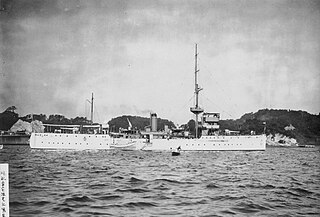 W
WAtaka (安宅) was a river gunboat of the Imperial Japanese Navy that operated on the Yangtze River in China during the 1930s, and during the Second Sino-Japanese War.
 W
WAtami (熱海) was a river gunboat of the Imperial Japanese Navy, part of the 11th Gunboat Sentai, that operated on the Yangtze River in China during the 1930s, and during the Second Sino-Japanese War. After World War II, the ship entered service with the Republic of China Navy as Yong Ping (永平), but was captured by the Chinese communists at the end of Chinese Civil War, and entered People's Liberation Army Navy as Wu Jiang (乌江). The ship was finally scrapped in the 1960s.
 W
WBanshu Maru No. 52 was an auxiliary minesweeper of the Imperial Japanese Navy during World War II.
 W
WCD-17 was a C Type class escort ship (Kaibōkan) of the Imperial Japanese Navy during the Second World War.
 W
WCH-14 was a No.13-class submarine chaser of the Imperial Japanese Navy during World War II.
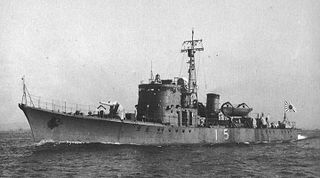 W
WCH-15 was a No.13-class submarine chaser of the Imperial Japanese Navy during World War II.
 W
WJS Chiyoda was a submarine rescue ship of the Japan Maritime Self-Defense Force.
 W
WJS Chōkai (DDG-176) is a Kongō-class guided missile destroyer in the Japan Maritime Self-Defense Force (JMSDF). Chōkai was named after Mount Chōkai. She was laid down by IHI Corporation in Tokyo on 29 May 1995 and was launched on 27 August 1996. Commissioning happened on March 20, 1998.
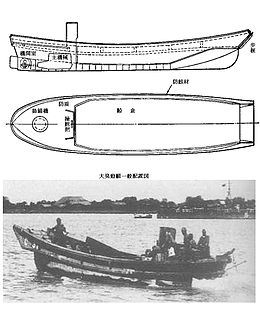 W
WThe Daihatsu-class or 14 m landing craft was a type of landing craft used by the Imperial Japanese Army from 1937 to 1945, in the Second Sino-Japanese War and World War II. It was designated the "Type A" landing craft by the United States.
 W
WJS Enshu is a Hiuchi Class Auxiliary Multi-purpose Support (AMS) ship of the Japan Maritime Self-Defense Force (JMSDF).
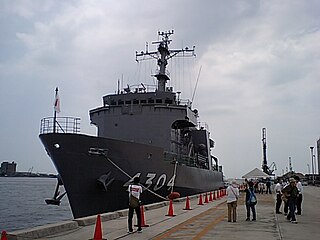 W
WJS Genkai is a Hiuchi Class Auxiliary Multi-purpose Support (AMS) ship of the Japan Maritime Self-Defense Force (JMSDF).
 W
WJS Haguro (DDG-180) is a Maya-class guided missile destroyer in the Japan Maritime Self-Defense Force (JMSDF). She was named after Mount Haguro.
 W
WJDS Harukaze was the lead ship in her class of anti-submarine ships, and the first destroyer of the Japanese Maritime Self Defense Force to be built in Japan since the end of World War II.
 W
WJDS Hatsuyuki (DD-122) was the lead ship of the Hatsuyuki-class destroyers. She was commissioned into the Japanese Maritime Self Defense Force in 1982 and was decommissioned in 2010 with 28 years of active service.
 W
WThe Hida-class patrol vessel are a class of patrol vessel within the PL series of the Japan Coast Guard (JCG). The class name "Hida" is named after Hida Mountains, the northernmost mountain range of the Japanese Alps, a famous mountain range in Japan.
 W
WHira (比良) was a river gunboat of the Imperial Japanese Navy, part of the 11th Gunboat Sentai, that operated on the Yangtze River in China during the 1930s, and during the Second Sino-Japanese War.
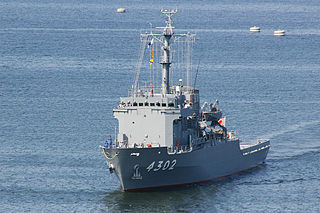 W
WThe Hiuchi class support ship is designed to provide Auxiliary Multi-purpose Support (AMS) for the Japanese Maritime Self-Defense Force (JMSDF).
 W
WHozu (保津) was a river gunboat of the Imperial Japanese Navy, part of the 11th Gunboat Sentai, that operated on the Yangtze River in China during the 1930s, and during the Second Sino-Japanese War.
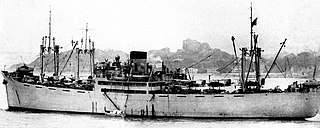 W
WKamikawa Maru (神川丸) was a seaplane tender in the Imperial Japanese Navy (IJN). The ship was initially built at Kawasaki's Kōbe Shipyard and launched on 13 December 1936 as a merchant vessel for the Kawasaki Kisen K. K. Line. On 18 September 1937 the IJN requisitioned her as an aircraft transport ship and she was refitted in 1939 as a seaplane tender. The ship subsequently saw service in the Second Sino-Japanese War and the Pacific Campaign of World War II. On May 4, 1943 Kamikawa Maru was torpedoed by the submarine USS Wahoo, but managed to survive the attack. However, on May 29, 1943, Kamikawa Maru was torpedoed again, and sunk by the submarine USS Scamp approximately 250 miles (400 km) northwest of Kavieng, New Ireland at 01°36′S 150°24′E.
 W
WKimikawa Maru was a seaplane tender of the Imperial Japanese Navy. The ship was built by the Kawasaki Dockyard Co. at Kobe as a cargo ship for a civilian ship company. In July 1941 the ship was taken over by the IJN and converted into an auxiliary seaplane tender. She was able to operate 6 Aichi E13A "Jake" floatplanes. On 23 October 1944 she was sunk by USS Sawfish at 18°58′S 118°40′E.
 W
WKita Maru was a Dutch-built, steel-hulled steamship that was seized by the Imperial Japanese Navy during World War II and converted into an auxiliary transport.
 W
WKiyokawa Maru (聖川丸) was a seaplane tender in the Imperial Japanese Navy (IJN).
 W
WKotaka (小鷹) was a river gunboat of the Imperial Japanese Navy, part of the 11th Gunboat Sentai, that operated on the Yangtze River in China during the 1930s, and during the Second Sino-Japanese War. Participated in the Battle of Wuhan, June-Sept., 1938. Participated in Battle of Madang and Battle of Jiujiang, June, 1938. Nanchang Campaign: February–May, 1939. 1942: In service as passenger ship. Sunk May 31, 1944 on the Yangtze River while serving as a communications ship. The IJN official designation was 60-ton traffic ship .
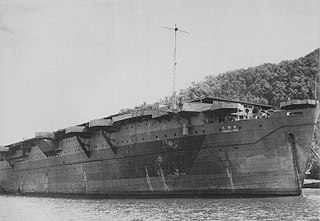 W
WKumano Maru (熊野丸) was a landing craft carrier with a small flight deck built for the Imperial Japanese Army during World War II. Launched and completed in early 1945, the ship saw no significant action.
 W
WJS Kurama (DDH-144) was a Shirane-class destroyer in service with the Japan Maritime Self-Defense Force (JMSDF). She is the second and final member of the Shirane class and has been replaced by the new Izumo-class helicopter destroyers in 2017.
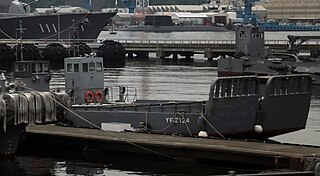 W
WJapan has eleven LCM 25 ton type landing ships in service with Japan Maritime Self-Defense Force. Built in Japan, the boats are similar in design to the US LCM-6 type and have similar capacity. Two larger 50 ton LCMs, built by Yokohama Yacht, were commissioned in March 2003.
 W
WJS Maya (DDG-179) is the lead ship of her class of guided missile destroyer in the Japan Maritime Self-Defense Force (JMSDF). She was named after Mount Maya and shares her name with a World War II heavy cruiser.
 W
WMikaho (美嘉保) was as small steam transportation warship belonging to the Navy of the Bakufu around 1860.
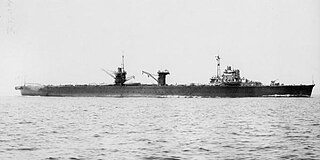 W
WMizuho was a seaplane carrier of the Imperial Japanese Navy during World War II. The ship was built at Kawasaki Shipbuilding at Kobe, Japan, and was completed in February 1939.
 W
WThe Japanese patrol boat Mizuho is a PLH type patrol vessels of the Japan Coast Guard. She was built by Mitsubishi Heavy Industries Shimonoseki Shipyard.
 W
WThe Murasame-class destroyer was a destroyer class built for the Japan Maritime Self-Defense Force (JMSDF) in the late 1950s as a successor to the Ayanami-class destroyers. Like its predecessor, its main task was anti-submarine warfare, but its improved weaponry also enabled it to perform better in the anti-air role, so this class was classified as "DDA" unofficially.
 W
WJS Myōkō (DDG-175) is a Kongō-class guided missile destroyer in the Japan Maritime Self-Defense Force (JMSDF). Myōkō was named after Mount Myōkō.
 W
WThe Myōkō-class cruisers were a series of four heavy cruisers built for the Imperial Japanese Navy in the late 1920s. Three were lost during World War II.
 W
WThe Natsushio-class submarines were significantly smaller than the next generation Japanese submarines, Ōshio, and the Natsushio-class submarines were the development of the Hayashio-class submarines. Also, the Natsushio class is one of the (coast-defence) hunter-killer submarine (SSK) of JMSDF. Construction of the two subs in the class was approved under the First Defense Buildup Program 1958-1960. However, the MSDF brass did not welcome the small submarines. Ongoing maneuvering regarding defense spending by the Ministry of Finance did not help matters. At the time, the Maritime Staff Office was trying to move the MSDF away from being a predominantly green-water navy. Small coastal SSKs like the Natsushio did not fit into such plans for the future. Therefore, neither further examples nor a successor class were built.
 W
WThe Ojika-class patrol vessel is a series of patrol vessels of the Japan Coast Guard. One former Ojika-class vessel was gifted to the Malaysian Coast Guard in 2017.
 W
WJDS Ōshio (SS-561) was in service with Japanese Maritime Self Defense Force. The Ōshio was planned and built to replace the aging Kuroshio.
 W
WRo-64 was a Japanese Type L submarine of the Imperial Japanese Navy which served during the 1920s and World War II.
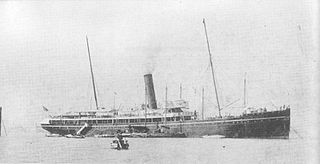 W
WSaikyō Maru (西京丸) was a Japanese cargo and transport ship involved in the Battle of the Yalu River (1894) during the First Sino-Japanese War, carrying Viscount Admiral Kabayama Sukenori, and commanded by John Wilson.
 W
WSakura was a Sakura-class destroyer of the Imperial Japanese Navy, built under the 1910 Programme as a 2nd Class destroyer.
 W
WJDS Sawayuki (DD-125) is a Hatsuyuki-class destroyer of the Japan Maritime Self-Defense Force (JMSDF).
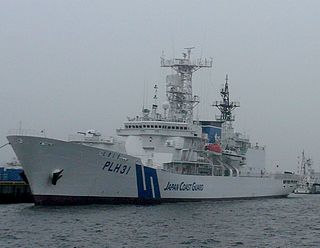 W
WThe Japanese patrol boat Shikishima is a Shikishima-class patrol vessel of the Japan Coast Guard (JCG). She was built by Ishikawajima-Harima Heavy Industries, Tokyo.
 W
WShinsoku was an early Japanese warship and steam transport that saw its main use in the Boshin War on the Shogunate side under the command of Enomoto Takeaki, vice-commander of the Shogunate Navy.
 W
WShirane (DDG-143) is a Shirane-class destroyer in the Japan Maritime Self-Defense Force (JMSDF).
 W
WThe Shirane-class destroyers were a pair of Japanese destroyers originally built during the late 1970s. They are built around a large central hangar which houses up to three helicopters and they are the natural successor of the Haruna-class destroyers.
 W
WThe ST-class was a type of armored boat of the Imperial Japanese Army that saw service during World War II. She was developed in 1940 mainly for riverine patrol in China, a role that was previously served by the Soukoutei-class armored boat. The prototype was 11 meters long with a beam of 2.00, a draught of 1.10, and her speed was 9.65 knots. All ships were built at the Yokohama shipyard of Mitsubishi Heavy Industries, Ltd. She was armed with a 37 mm gun (jp:狙撃砲).
 W
WJS Suō is a Hiuchi-class Auxiliary Multi-purpose Support (AMS) ship of the Japan Maritime Self-Defense Force (JMSDF).
 W
WTachibana (橘) was a Sakura-class destroyer of the Imperial Japanese Navy.
 W
WTama Maru was an auxiliary minesweeper of the Imperial Japanese Navy during World War II.
 W
WTama Maru No. 3 was an auxiliary minesweeper of the Imperial Japanese Navy during World War II.
 W
WTama Maru No. 5 was an auxiliary minesweeper of the Imperial Japanese Navy during World War II.
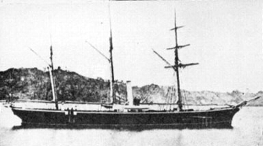 W
WThe Japanese warship Teibō No. 2 was a ship of governmental forces during the Boshin war.
 W
WTōhō Maru was an oiler of the Imperial Japanese Navy (IJN). The ship was launched as a civilian oil tanker for Iino Kaiun Kaisha on May 1, 1936. On August 20, 1941 the ship was requisitioned by the IJN and converted into a fleet replenishment oiler. The ship subsequently served Japan during the Pacific Campaign of World War II. On March 29, 1943 the ship was torpedoed and sunk in the Makassar Strait at 00°00′N 118°19′E by the United States Navy submarine Gudgeon (SS-211).
 W
WJS Yamagiri (DD-152) is an Asagiri-class destroyer in the Japan Maritime Self-Defense Force. (JMSDF)
 W
WJS Yamayuki (DD-129) is a Hatsuyuki-class destroyer of the Japan Maritime Self-Defense Force (JMSDF).